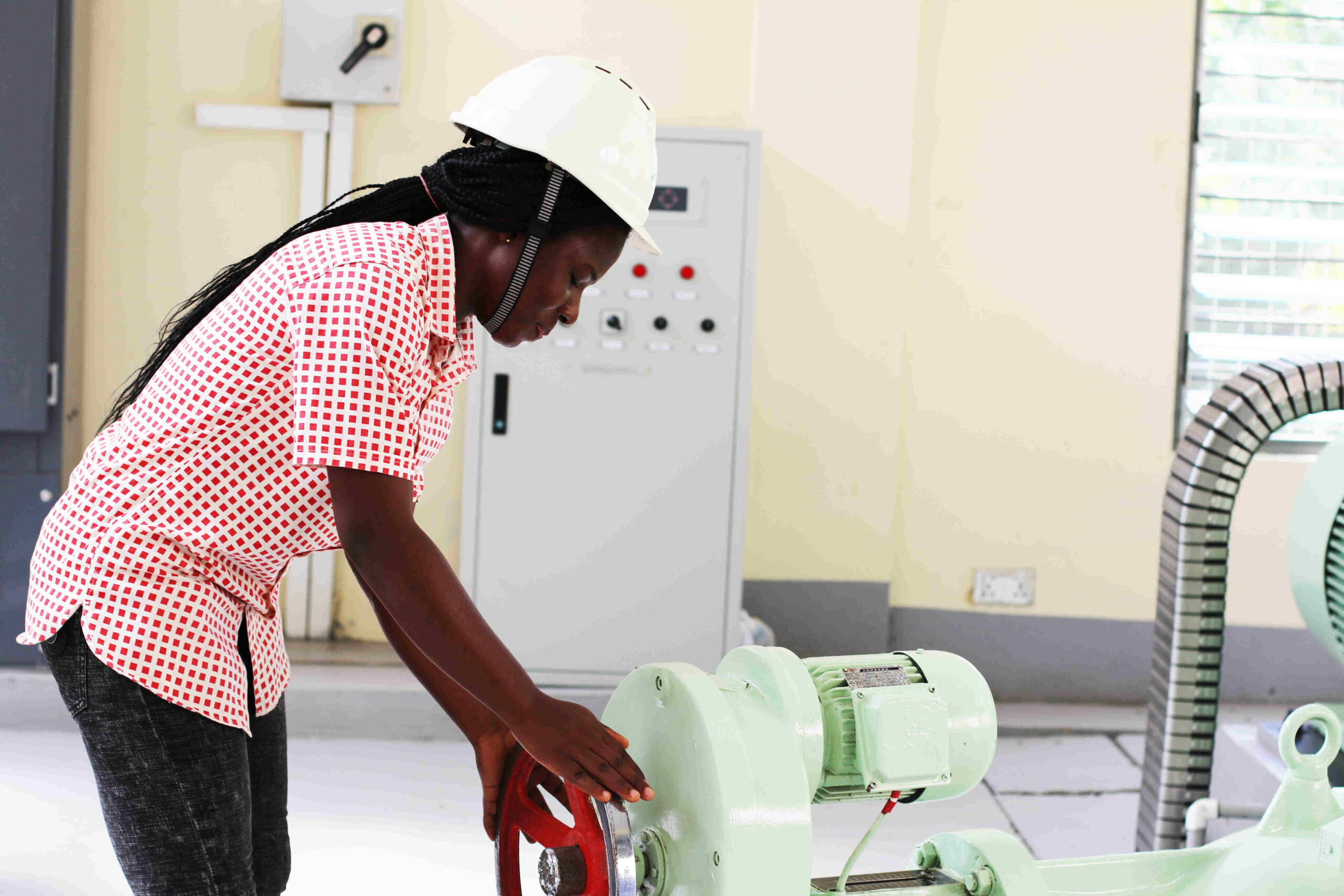Ghana’s first mini hydro plant is an engine for job creation and power generation
“My dream is to become a top-notch engineer”, said Janet Etornam Kekesi, a 20-year old operating technician working at Ghana’s first mini-hydropower plant, the Tsatsadu Generating Station, located in Alavanyo in the Hohoe Municipal Assembly in the Volta Region of Ghana.
Like many community members, Etornam received the news of the construction of the mini hydropower with excitement. This excitement became a fulfilment for her and other young people in the community, who received training and employment to manage the plant as security officers and electrical technicians.
“Working with the Bui Power Tsatsadu Generating Station has helped me to explore and learn more about the system, how to generate power and how it works, she added.
Bismark Asare, the Assemblyman, and Youth representative of the community noted that the community is proud to be the chosen host of the hydropower plant. He expressed gratitude to the partners for this project.
“Through this initiative, some youth in our community have jobs now to earn their daily income. Previously, some of us did not know what mini-hydropower was and had never even seen it before, but thanks to this project, selected youth have now been trained and have gained employment with the Tsatsadu mini-hydro power plant”, Mr Asare disclosed.
The Tsatsadu mini hydro power plant: a green power generation source
Renewable energy is a priority sector for Ghana’s climate change mitigation agenda. The Ministry of Energy through the Bui Power Authority (BPA) and with support from the United Nations Development Programme (UNDP) completed the mini-hydropower plant known as the Tsatsadu Generating Station (TGS) under the Ministry of Energy’s Renewable Energy Master Plan. The Plant situated on the Tsatsadu Waterfalls has a power producing capacity of 45kilowatts with the possibility of adding another 40-60kilowatts capacity turbine in the future.
The plant is a beautiful sight to behold and does not depend on a water reservoir for its operation. The installation consists of a weir that diverts part of the flow of the Tsatsadu River, and an intake installed in the weir leads the water to a diversion channel. The water passing through the diversion channel flows through a 300 mm diameter steel penstock down a steep slope to the powerhouse built at the foot of the hill. With the speed generated by the hill, the water turns a turbine that produces the 45 kW of electricity. One feature of the plant is that during the construction the ecological make up of the site was not disturbed- the landscape is still intact.
The power generated from the mini-hydro power plant relies on the water cycle, making it a renewable power source. This makes it a more reliable, less carbon footprints and sustainable source.
“Because hydropower plants can generate power to the grid immediately, they provide essential backup power during major electricity outages or disruptions. In addition to a sustainable fuel source, hydropower efforts produce many benefits, such as flood control, irrigation, and water supply”, Etornam noted.
The project cost US$400,000 and was funded largely by the Bui Power Authority. UNDP, in collaboration with the Energy Commission, contributed by providing electromechanical equipment and facilitated a partnership with the International Small Hydro Power in China that provided the needed technical support to BPA. This was in the context of the Danish funded “China-Ghana South-South Cooperation Renewable Energy Technology Transfer” project.
A tourist centre offering economic benefits
The Tsatsadu waterfall is a tourist site and the construction of the mini hydropower offers a combined variety of activities which include practical tutorial for engineering students across the country and the West African sub-region, swimming and boat riding, which attract more tourists into the community.
“In the past, we used to sell most of our farm produce at Kpando which is about 4 hours from Alavanyo, but since the completion of the Bui Mini hydropower plant, we have received several visitors who purchase our foodstuffs. The Alavanyo community has become a centre of attraction for being the first community to host the mini-hydropower plant in Ghana”, Agnes Enyogbe, the regent Queen Mother of Alavanyo recounted.
Scaling up mini grids
Now that the system is up and running, it is important to ensure its long-term maintenance and financial sustainability. With this proven concept, it will be possible to invest in more mini-hydro plants to benefit especially off-grid communities. This is in line with the Sustainable Development Goal (SDG) 7, which calls for universal access to clean, reliable, and affordable energy, and is also set to advance the country’s climate agenda.

